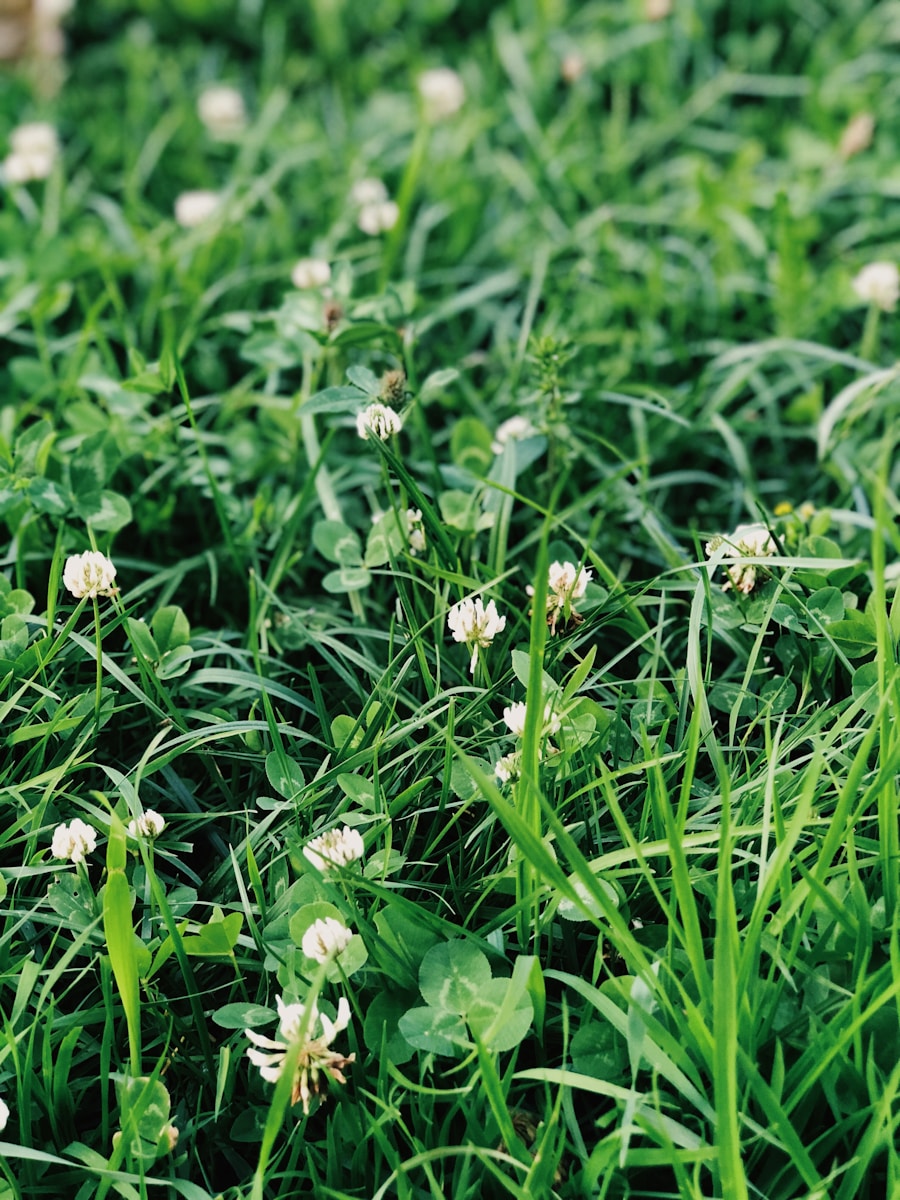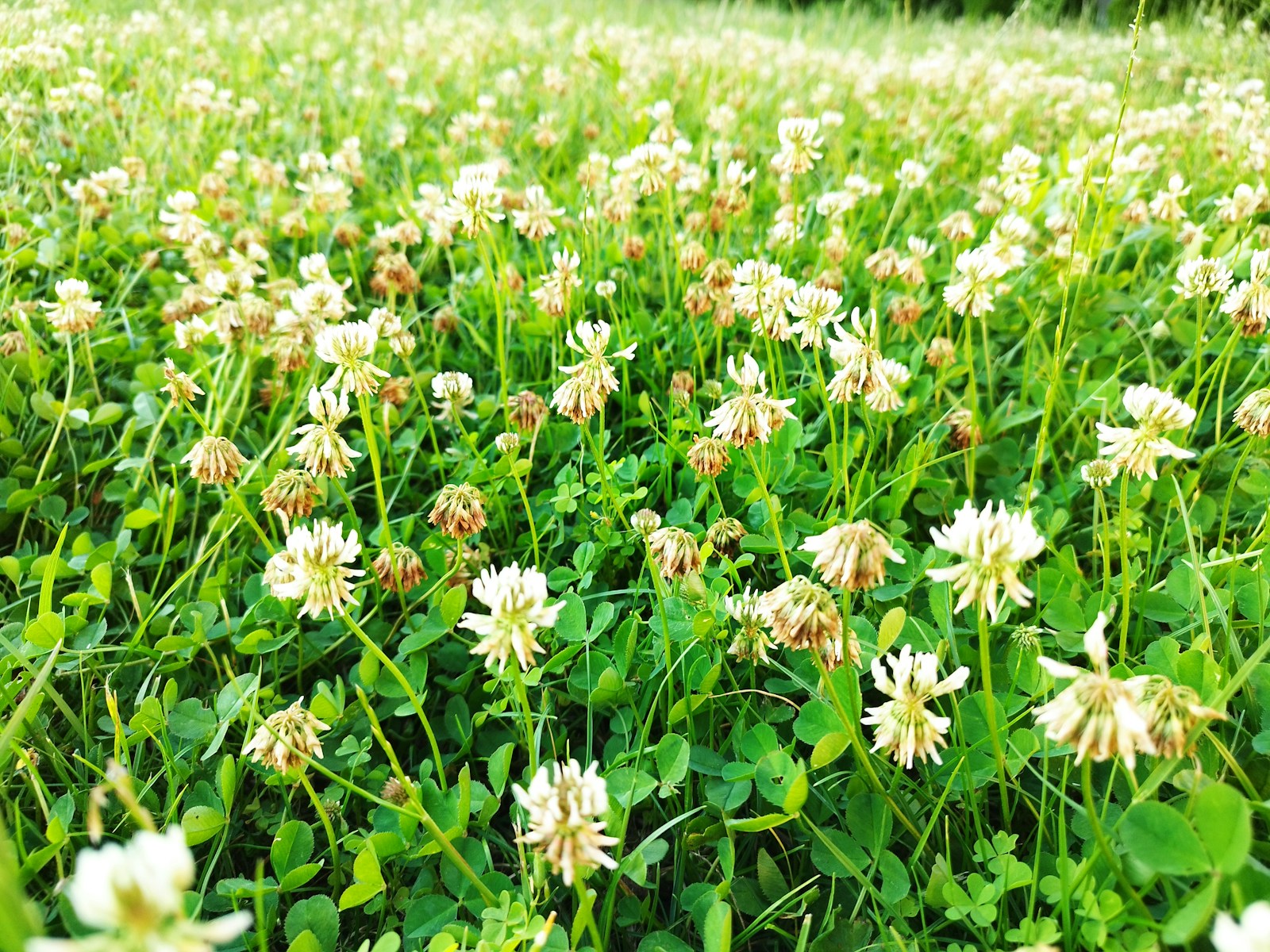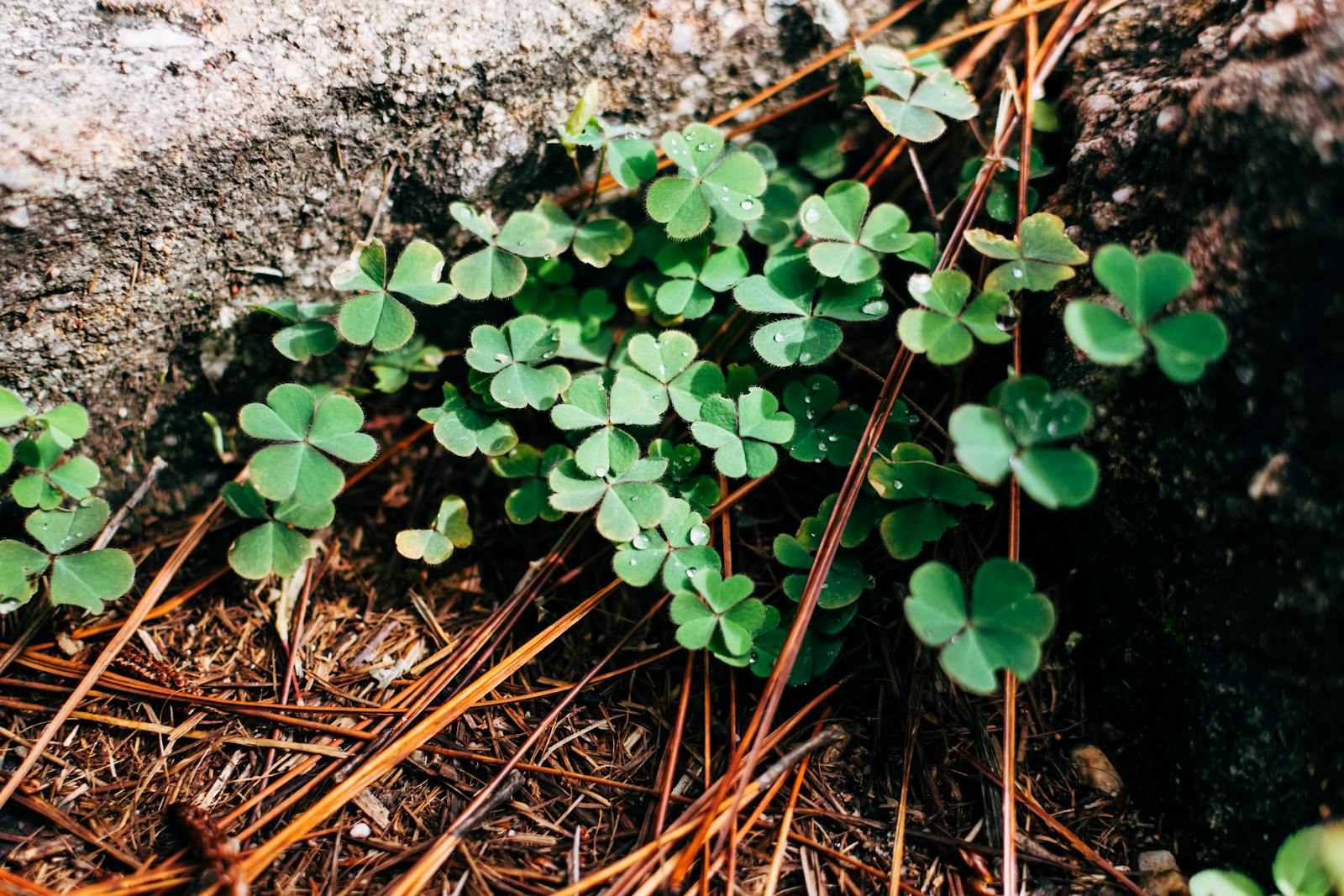Why Clover Variety Matters
Clover lawns are growing in popularity thanks to their low maintenance, drought tolerance, and eco-friendliness. But here’s the thing: not all clover is the same. Different varieties have different looks, growing habits, and benefits for homeowners. Choosing the right type of clover can make the difference between a lush, resilient lawn and one that struggles in your climate.
In this guide, we’ll break down the three best clover varieties for lawns—microclover, white Dutch clover, and strawberry clover—and help you decide which one is right for your yard.
1. Microclover (Trifolium repens var. ‘Pirouette’)
Microclover is a newer variety bred specifically for lawns. Its leaves are about ⅓ the size of traditional white clover, giving it a fine-textured look that blends seamlessly with turfgrass.
Benefits:
- Blends invisibly into grass lawns
- Creates a dense, uniform groundcover
- Tolerates mowing very well (even as low as 2 inches)
- Fewer flowers than regular clover = fewer bees (great for kids/pets)
- Extremely soft underfoot
Drawbacks:
- More expensive seed compared to standard clover
- May thin out in areas of extreme heat without reseeding
Best for homeowners who want a traditional “grass lawn look” but with the benefits of clover.
2. White Dutch Clover (Trifolium repens)
The classic clover lawn seed, White Dutch has been used for decades across North America. It’s hardy, reliable, and self-seeds year after year.
Benefits:
- Readily available and affordable
- Tolerates foot traffic
- Stays green through most summer droughts
- Attracts pollinators like bees and butterflies
- Great for full clover lawns or mixing with grass
Drawbacks:
- Produces more flowers = more bees (a concern for some families)
- Taller growth than microclover (3–6 inches)
- Can spread into flower beds if not managed
Best for homeowners who want a budget-friendly, full clover lawn that reseeds itself.
3. Strawberry Clover (Trifolium fragiferum)
Strawberry clover is less common but a great option for hot, coastal, or challenging soils. It looks similar to white clover but has unique advantages.
Benefits:
- Tolerates salty soils (excellent for coastal regions or roadside lawns)
- Handles heat better than white clover
- Dense mat-forming growth prevents weeds
- Thrives in clay-heavy or compacted soils
Drawbacks:
- Not as widely available as microclover or white Dutch
- Leaves slightly larger, making it look less “grass-like”
- Can grow taller (up to 8 inches) if not mowed regularly
Best for homeowners in hot climates, coastal areas, or poor soils where other clovers struggle.
Clover Varieties at a Glance
Here’s a quick side-by-side comparison to help you decide:
| Clover Type | Look & Texture | Height | Bee Attraction | Best For |
|---|---|---|---|---|
| Microclover | Fine, grass-like | 2–4 in | Low | Blending with grass lawns |
| White Dutch | Classic clover | 3–6 in | High | Budget-friendly, self-seeding lawns |
| Strawberry | Larger leaves | 4–8 in | Medium | Hot, coastal, or clay soil lawns |
Which Clover Lawn Should You Choose?
- Want the closest look to traditional grass? → Go with microclover.
- Want a full, budget-friendly clover lawn that reseeds itself? → Choose white Dutch clover.
- Struggling with heat, poor soil, or salty conditions? → Try strawberry clover.
No matter which you pick, you’ll enjoy a lower-maintenance, eco-friendly lawn that saves money on fertilizer, water, and time.


